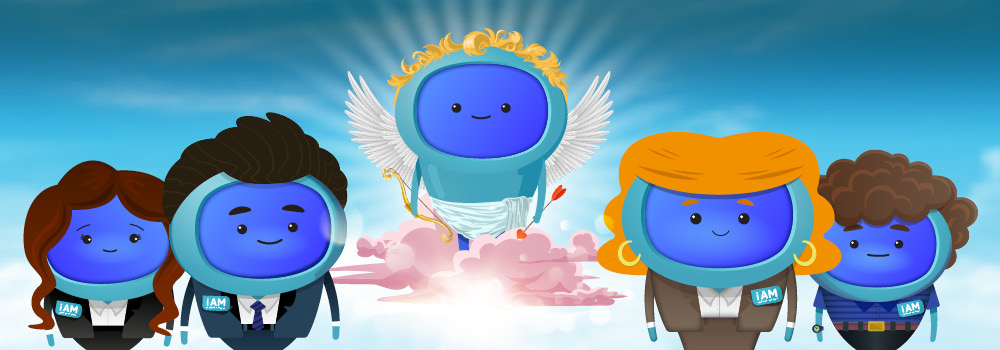We’ve all been in an unnecessary or never-ending meeting where we can’t stop yawning.
And if you've fallen asleep during those boring meetings, you're not alone. In one study, nearly 40% of professionals admit to having nodded off during a meeting at least once!
Is the same thing happening with your learning? If so, there’s likely to be more than one reason learner attention is waning, and it might not be that obvious after all. It’s time to put your performance consultant hat on and get digging to find the root cause(s).
But where do you start? Never fear - we've put together this guide to help you get going and discover more ways to engage your learners.
How to boost your learner engagement
1. Learning relevancy
Let’s start with a big one - the ‘why’. Most of us are time-poor at work, so when we find ourselves in a training session which appears to have very little to do with us, or our job, we tend to zone out and get frustrated. If this keeps happening then, over time, this can lead to a resistance to learning and a poor relationship with L&D in general.
Learning becomes something which gets in the way of you doing your job, instead of what it should be achieving - helping you to do it more efficiently and effectively.
So what can you do about it?
Working out what specific individuals or teams need and personalising pathways isn’t typically a quick exercise and might not be feasible to do this in detail, but a good place to start is with your mass roll outs.
Are there courses or programmes which get assigned to everyone, perhaps when they start at the business or as an annual tick box? If so, is this genuinely relevant to all of them?
If learners feel overwhelmed or part of a learning conveyor belt of generic courses, they may lose sight of the benefit or struggle to find what they need. Perhaps it’s time to strip it back - think about the core competencies of the role, the problems they need solving, the barriers in the way, and tackle those things first.
2. Timely delivery
Delivering the right learning at the right time is another key consideration here, and onboarding is a great example of what we mean. You might decide that new employees need a comprehensive learning programme to get them up and running; a whole host of eLearning on crucial power skills, walkthroughs of all the tech, compliance training, development for skill gaps and beyond. Great. But do they need to know all of it in their first week?
We often think of onboarding as a short-term status, there to get the individual up-to-speed as quickly as possible. But we undervalue the ‘as possible’ part - because if we bury them in a million pieces of information, they’re likely to just emerge intimidated and confused. It’s good to think of ‘as possible’ in line with ‘as necessary’. What are the crucial things they need support with and to what level right now?
Teaching them about systems on their first day which they won’t get their hands on for say three months is just going to result in more training later. The tangible hard skills are often prioritised way above the truly important stuff too - like introducing the individual to the culture, the way things work here, and helping them to build relationships - the lesser considered stuff that enables someone to be successful and happy somewhere new.
You might decide it makes sense for onboarding to play out over six months, or even a year. A well-thought out, structured and timely programme has huge bearing on long-term retention, so don’t rush things.
And this is the same for any learning intervention - rule out that when something is delivered isn’t a spanner in the works for how engaged learners are.
3. Learner collaboration
Asynchronous learning, or learning which isn’t fixed to a time or place and can be enjoyed whenever suits, has a lot of advantages. Amongst them, it means that should you want to sit in your PJs in bed at midnight and take an eLearning course on Giving and Receiving Feedback, you absolutely can. No judgement here!
Problems might arise though if a considerable amount of the learning is a solo activity and learners aren’t encouraged to work together. Remote learning might be necessary, but a lack of opportunity to gather and discuss with others, even online, could be lessening the impact of the learning.
Most people see social interaction (with friends, not strangers!) as a reward. That’s not to say everyone wants to be forced to interact with people all the time - this is just another avenue to explore if engagement is lacking.
Rewards are great motivators. And being able to spend time with colleagues we have good relationships with, having fun and exploring the topic, can also help the content land. This is particularly the case when we’re talking about opportunities to practice, unpick complex ideas or takeaway tasks which are better tackled as a group.
A group setting is where things might really come alive and it could allow new ideas and perspectives to spring forward, especially from individuals who understand the context of your organisation.
So, allowing your learners some scheduled time to chat with their co-workers about the lesson material can help them to remember and apply it, as well as enjoy a nice cuppa!
4. Incorporate movement
More brain facts coming your way - learners of all ages and backgrounds perform better and retain knowledge longer when there is a component of movement involved.
Whether it’s getting up to go to talk to a coworker or moving about the room for a four-corners activity, increased movement leads to increased blood flow to the brain - which stimulates memory.
Building in time during your lessons for your learners to move and interact with one another will therefore lead to more employee engagement and better knowledge retention.
5. Set learning goals
Another great engagement strategy is to begin the lesson by having your learners set a goal. The goal can be simple, such as what they plan to learn during the session, or more complex such as what they’ll do with the information in their lives once they’ve finished.
A stronger version of this is to utilise SMART goals. This stands for Specific, Measurable, Attainable, Relevant, and Time-Bound. Having your learners create these SMART goals will help them to take more responsibility in the learning process and stay engaged.
This also connects with making the learning relevant to their lives. When learners have a goal to achieve, and they are held accountable for that goal in some way, they are much more likely to try to achieve it.
6. Learner input
Another way to make the learning 'real' for your employees is to get their input and feedback in a variety of situations. Offering them opportunities to share what they have learned, or how they feel about the content, really gives it a personal touch.
Having personality in your lessons makes them more genuine and makes learners much more likely to care and be invested in what they're learning.
You can get learner input by providing check-ins to see how well they're learning so far, offering choices of what to learn about next, and any other way that connects the learning with them on a personal level.
7. Convenience
One way to make learning more enjoyable and engaging is to make it convenient for learners. This includes allowing them to take the lesson on their own time, at their own pace, and wherever it is most convenient for them (at home, perhaps).
Online learning allows just this. If you’re forcing learners to sit in a conference room while someone rambles on at them, no matter what that topic is, they’d quite likely rather be just about anywhere else than have to endure that.
By allowing learners the convenience of learning from home online is a great way to make it more engaging. Humans don't like doing more work than they have to, which is why learning is way easier when it's streamlined.
If you want it to be really convenient, even for you, you can check out our off-the-shelf eLearning library about a wide variety of different topics. We have plenty of ready-made videos, as well as a schedule of videos to come, for many different fields and popular lessons.
But wait, you argue, if they're at home how can I be sure they're paying attention? Read the rest of the article - we're getting to that.
8. Learner rewards
We’ve mentioned that socialisation is a reward in itself, but there are plenty of other kinds of rewards that benefit employee engagement.
Colours, pictures, and sounds are also very rewarding to our brains, unlike dull, grey office buildings with sad fluorescent lighting. Learning outside or having engaging stimuli around, such as pictures and videos, will drastically help with learner engagement.
You can consider offering incentives or other physical rewards (like doughnuts or coffee!). For example, if employees are looking forward to a light catered lunch after a full morning of meetings and professional development, they might be a little happier.
Time off for workers, bonuses, and other non-tangible rewards work great as well. Brainstorm some ideas of what you can do to reward your learners for all their hard work.
Having fun can be a reward as well. Finding ways for your employees to have fun as they go through your lesson will make them associate the learning with a positive experience, which will help them to better retain the information.
It’s worth finding out what people consider rewarding, as we don’t all enjoy the same things. To some people, a shout out at the company meeting sees them beaming all day, but other people can’t think of anything more embarrassing. So work out what makes your learners tick.
9. Gamify learning
Mary Poppins had it right in the song "A Spoonful of Sugar" when she sings "In every job that must be done/ There is an element of fun/ You find the fun and snap!/ The job's a game." Turning learning into a game is an excellent way to make it more fun and engaging.
When it’s the right (and thoroughly considered) vehicle and not just reached for as the latest fad, gamifying learning can be really effective. It refers to adding an element of play or gaming to the lesson. This idea has actually been around for some time, although it has gained popularity more recently with online learning.
There are a variety of ways to gamify your lessons, some involve more prep than others. Many lessons involve game-show style review games at the end, and these can be a fun way to review content and check understanding.
Other ways of gamifying content involve turning the entire learning experience into a game. This can include offering players points, or spaces moved forward on a board, for correct answers throughout the lesson, and seeing who gets to the end first.
This can be a great motivation for your online learners to keep paying attention as well. If they stray too far from their computer or stop paying attention, they won't get a high score, or be able to advance the story, etc. This keeps them accountable for their learning while keeping it fun.
The possibilities here are as limitless as your imagination. Everything from escape rooms to roll-playing games can engage your learners with gamified learning.
Engage your learners and improve your learning strategy
Obviously not all learning contexts or environments will be the same but we hope this highlights some strategies to help you find ways to engage your learners and make learning a more fun experience for them.
We pride ourselves on our engaging, daring and funny learning experiences that we know your learners will love. Who knew eLearning could be this fun? Try iAM Learning for yourself - get started today!
Or if you’d like to discuss your learning strategy further to make sure you’re really getting your learners onboard, have a chat with our L&D Manager, Gemma Glover, who will be happy to help you.




